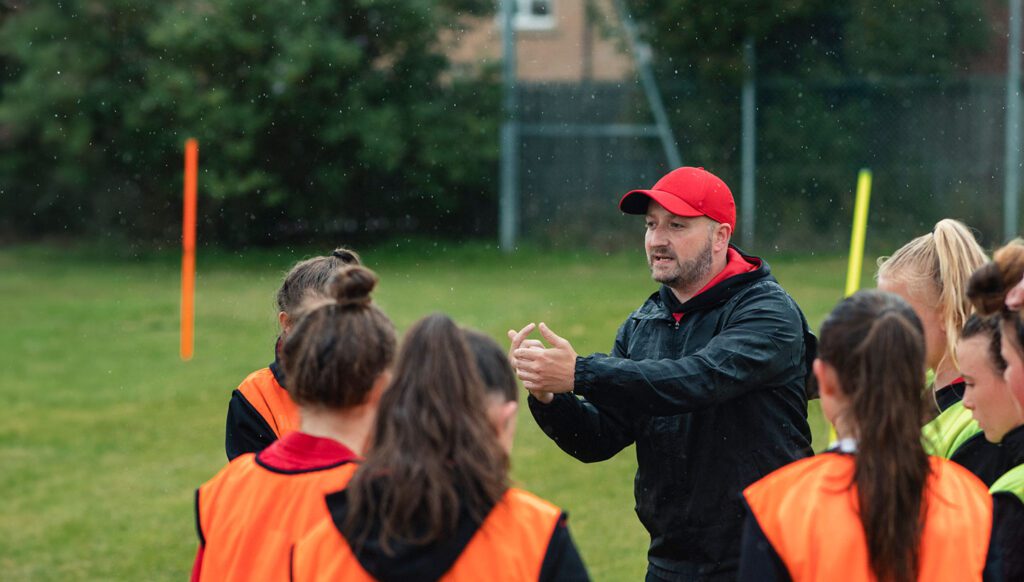Boosting member engagement
Maintaining and boosting member engagement has looked very different over the last year. We’ve all had to find new ways to keep our audience interested and invested throughout lockdown – something that has been particularly difficult for grassroots clubs who have had their doors closed for months on end.
You may feel as though the return to sport means everything will go back to ‘normal’, and these new methods you’ve adopted are no longer necessary. But actually, now is the most crucial time to maintain and encourage that engagement.
In this article, we’re going to share some ideas for how you can improve engagement with your members, both now and in the future.
Download our free ultimate Membership Management ebook.
Social media is the home of engagement
It’s highly likely that over these periods of lockdown, you’ve increased your club’s social media activity. Throughout this process, you may have also learnt that social media can be a bit of a beast to manage. The more time you put into it, the more work is created!
For example, the more updates you share, the larger your following/presence becomes, and therefore the more comments, messages and interactions you receive that you need to respond to. It may seem like a vicious circle, but these are all good things. People are engaging with your club, and want to hear more from you.
But whilst it can be a lot of work, it’s essential you remain on top of it and manage it properly. After all, if you receive a slightly negative comment and don’t act upon that, that reflects badly on your business. So, how can you use social media effectively to improve customer engagement?
Provide staff members with guidelines
Managing your social accounts is not a one-person job. It needs to be a joint effort, from many members of your team. One easy step you can take is providing your staff with guidelines for managing your club’s social media channels.
In your guidelines, provide example responses for common customer enquiries. That way, as soon as a new question or comment comes through, anyone – coaches and admin staff alike – can respond using the scripted answer.
Being known for fast responses is great for your business, and gives people a reason to to follow and engage with you. On the other hand, if customers know they never receive a response on your social media, they’ll stop interacting.
Drive engagement through competitions
A great method for driving interaction with your current followers, and building awareness with new audiences, is through competitions. This could asking your followers to post using a hashtag that includes the name of your business (this will also help you keep track of entries).
Social media platforms have rules for running promotions so check the relevant policies first:
- Facebook – Pages, Groups and Events Policies
- Twitter – Guidelines for Promotions on Twitter
- Instagram – Promotion Guidelines
- Pinterest – Advertising Guidelines
Explore new channels
If you have a strong presence on one particular channel, such as Facebook or Instagram, you may think you have social media covered. But it’s worth working on your weaker channels too, to increase your share of voice further.
Let’s say, for instance, you don’t have a Twitter account yet. Although having a large, engaged following on Facebook or Instagram alone is great, think about the new audiences you could reach by being present on Twitter too. And even YouTube, and LinkedIn.
Some of these channels might not be relevant to your brand; perhaps you’ve already outlined that no one within your target audience would be on those platforms. But don’t rule out something like LinkedIn without considering first the types of customers you could reach there. Many professionals have LinkedIn accounts, so that’s a perfect place to find and engage with potential new parents.
Plan your content strategy
It’s also important to think about the content you plan to share on each social media channel. What works on Instagram doesn’t necessarily work on Twitter, for example.
People behave differently on the individual platforms; they go to Instagram to see pictures and videos, but they may open Twitter to read funny jokes and see what’s happening in the world. Explore what you think your followers would expect (and like) to see from you on each of the different channels, and tailor your content to that.
But most importantly, cater your content strategy to what you are able to share. For example, don’t worry about setting up a new YouTube account, if you don’t have much video content to post.
Remember that people won’t follow accounts that don’t share regularly, or if the content being posted isn’t what they want to see.
Additional customer engagement methods
While social media is certainly the home of building customer engagement, there are many other methods you can use too:
Reviews
There are lots of different channels where your club receives reviews from customers – whether that is on social media or Google. The key is to ensure you are actively reviewing and responding to any feedback you receive.
If you receive a negative review, it’s important you act – don’t ignore it in the hope of not drawing attention to it. You need to find out why that reviewer is angry, what the issue is, and what you can do to make things better for them. Not only does that help to repair and rebuild the relationship with the reviewer, but also onlookers checking out your club’s reviews can see your commitment to improving what you do.
On the other hand, if you receive positive feedback, you should respond to this too. Thank the commenter and celebrate the review by sharing it with your employees. You could even create a case study or testimonial for your website and newsletter.
This has many benefits: it allows you to highlight to your staff how valuable they are, it helps you to build strong and positive member relationships, and demonstrates how great your club is to potential prospects.
Bear in mind that if you’d like to feature the review in any of your marketing materials, you need explicit consent from the reviewer first.
Showing loyal customers appreciation
What better way to build even stronger customer relationships than to surprise them with a reward? Maybe one member has been with your club for five years, or perhaps they always interact and support you on social media. Thank them by giving them a small gift.
It doesn’t have to cost much; it could simply be a voucher for a free training session. Or perhaps a free piece of kit. Recognising the individuals for their support and thanking them with a small gift like this demonstrates just how much you appreciate them. They’ll feel great, knowing they mean a lot to you. And you’ll be encouraging even greater loyalty from them.
Free trials
It’s important that you’re not always focusing on selling to your customers; you need to be providing them with free value too, to encourage them to invest in you. An example of this is offering free trials for training.
Trial sessions get new customers through your doors, and it doesn’t take long to show them what you have to offer.
Offers
Many of us are drawn to offers and bargains. How could your club make use of this to meet new potential customers, and build relationships with existing members?
What about letting members know that if they bring a friend to the next session, they get money off their class price? Or if they pay for a block of sessions in one go – perhaps a term’s worth of classes – they receive a discount?
Additional services for discounted rates
You could also consider bringing external community businesses into your club. For example, offering your grounds to a local yoga class provider. You could rent out your space, and negotiate discounted class prices for your members. This is a win-win situation; the yoga provider meets new customers, you gain income from the rent, and your customers can access cheaper yoga sessions. (So really, it’s a win-win-win!)
The same goes for community businesses like coffee shops. Maybe you could arrange with a shop that your members get discounted hot drinks? And in return, they have advertising rights at your clubhouse. This benefits both businesses (your club and the shop), and provides an all-round positive customer experience.
Customer surveys
Surveys are very quick and easy for you to set up, and can be easy for customers to fill out. Therefore they’re a great way of gauging attitudes and opinions of your club. But you need to ensure they are as valuable as possible.
Before setting one up, ensure you’re clear on what you want to find out. And what you will do once you’ve received the responses; are you ready to act on any constructive feedback given?
Surveys are great at demonstrating to your customers that you want to hear their thoughts, and you value their input. But if you aren’t going to implement their suggestions then it is a wasted exercise. So make sure you have a post-survey plan in place, and communicate that with your customers so they know you’re taking their feedback on board.
And despite them being quick to fill in, it can sometimes be difficult to generate a high volume of responses. If that’s something you’re struggling with, consider offering a reward to customers who take part.
Involve your customers in any club changes
As we’ve discussed previously in our Parent Factor series, it’s important that you keep key stakeholders (such as parents) involved in any decision-making processes or changes within your club. If there are substantial changes taking place and your membership base isn’t kept informed, you could tarnish that relationship.
Involve them from the start by asking them to fill out surveys to share their thoughts – this will make them feel much more valued. This then boosts their affinity and loyalty to you, further building a positive customer relationship.
Get to know your audience
Do you know exactly who your key audience is? Who are the people that spend the longest time on your website, that engage with your social media accounts the most? It can be easy to make assumptions based off who you think they are. But it’s important to spend the time to gain a greater, more in-depth understanding of your audience.
There are plenty of free analytics tools available to you – such as Google Analytics – to review your website audience, or Facebook analytics to assess your social media followers.
If you can successfully identify who your current audience is, then you know the types of people you need to try and reach with any advertising or customer growth activities.
Ultimately, you need to use these analytics tools to gain insight and knowledge on your customers, so that you can maintain and improve engagement. On social media, for example, take a look at which types of posts generate the most likes, shares and comments. Perhaps your followers love video content, and don’t tend to respond to updates with no image? Use this insight to enhance your content strategy, in order to create a great customer experience.
Act on the feedback you receive
Last but certainly not least – ensure you act upon customer feedback. We’ve mentioned this already with positive and negative reviews, and survey responses. But it’s worth reiterating, as it’s vital for continuing to develop strong customer relationships and experiences.
If your customers know that you take their feedback on board, in order to make the club as good for them as you possibly can, they will be able to see clearly how much you value them.
–
Hopefully you’ve seen just how many outlets there are to interact and engage with your customers. Whether you start by working on your social media presence, or decide to introduce small thank you gifts for loyal members, you’ll boost customer loyalty in no time.
This article was based on a live video hosted by Alex Row, LoveGymnastics Community Ambassador. If you’re involved with a gymnastics or football club and are interested in watching similar videos in future, join our dedicated Facebook Communities:

















